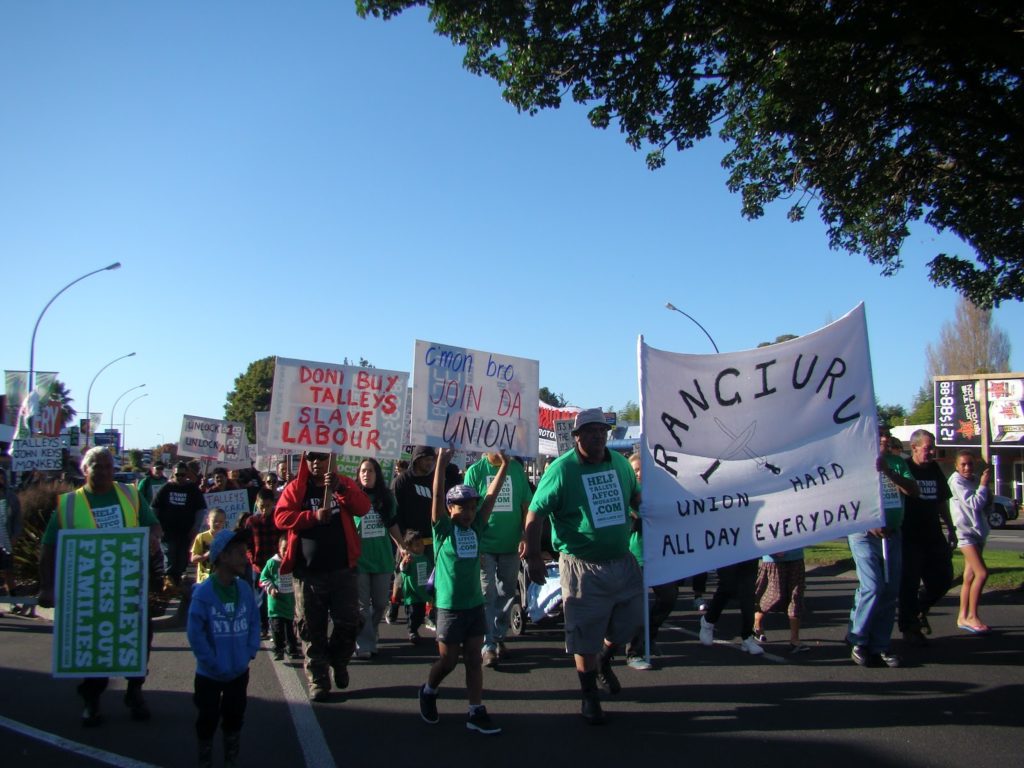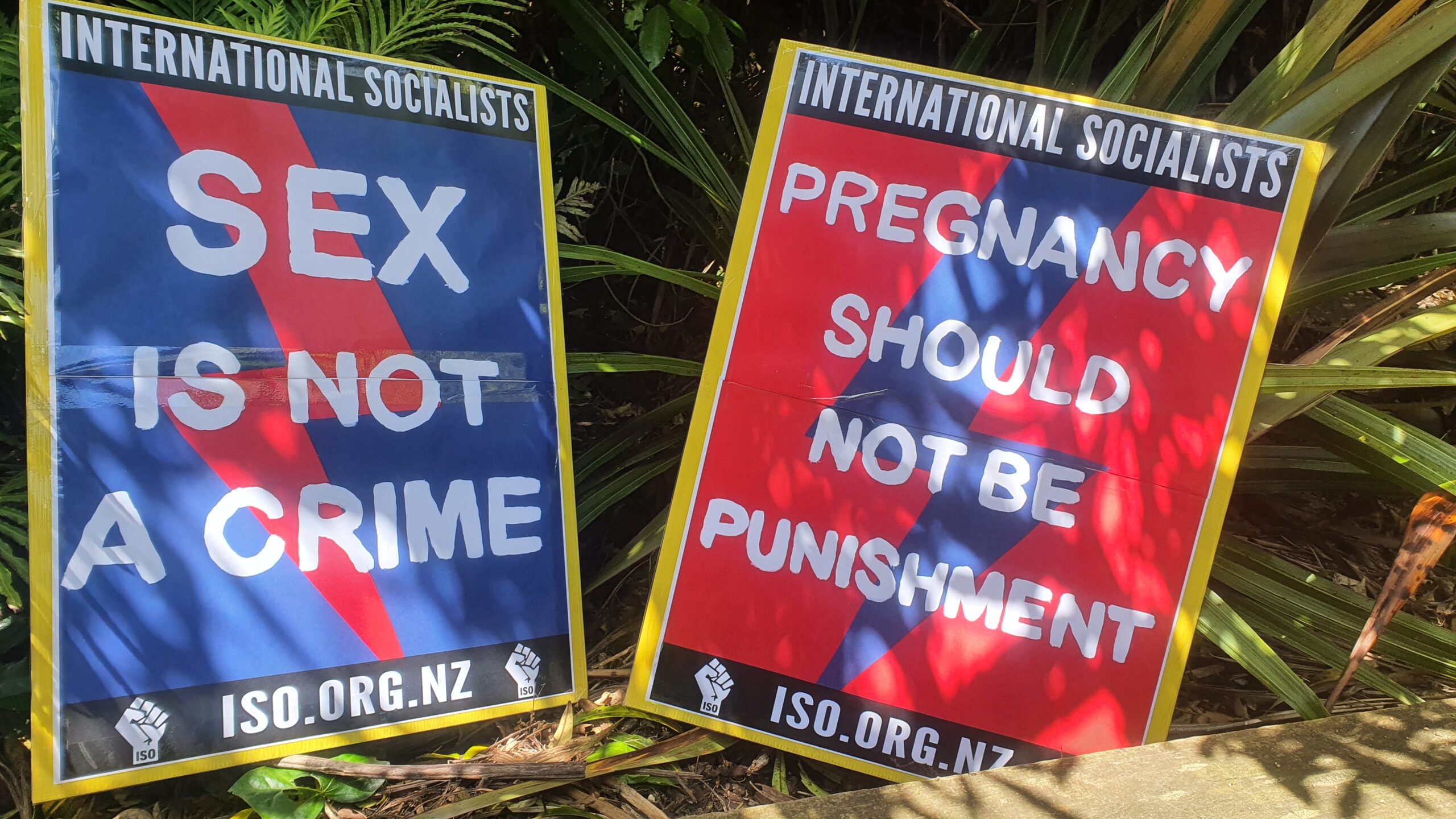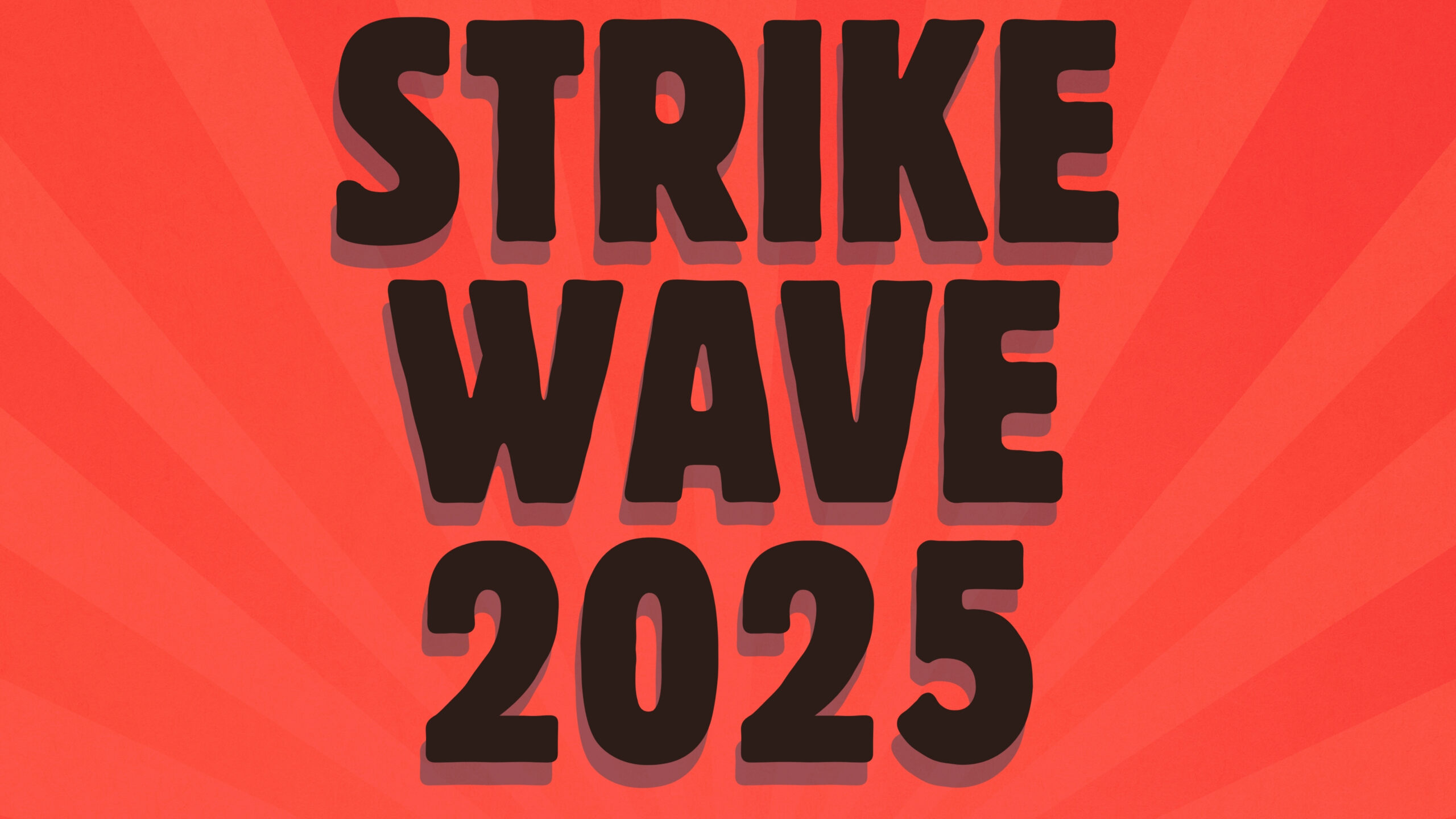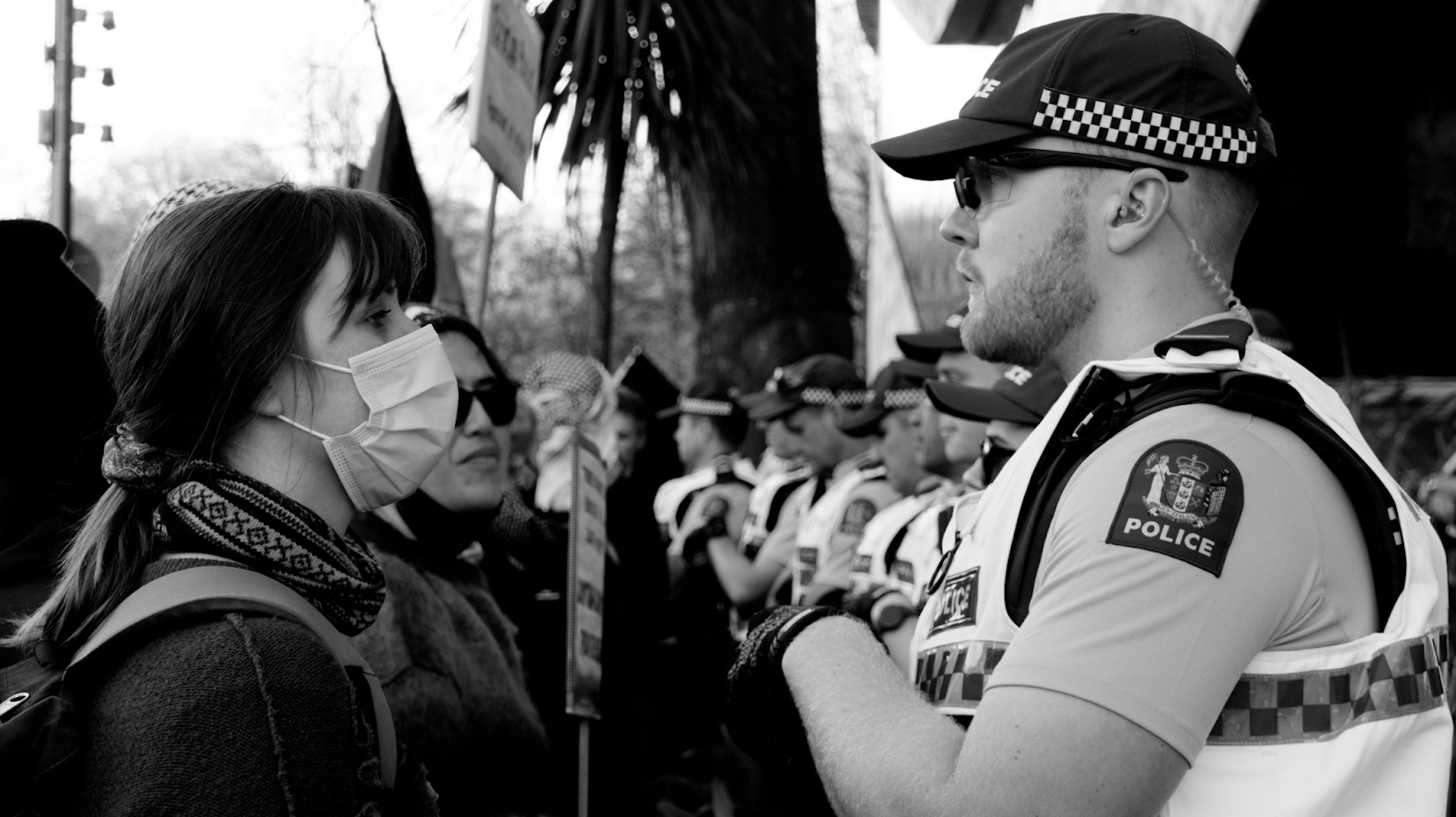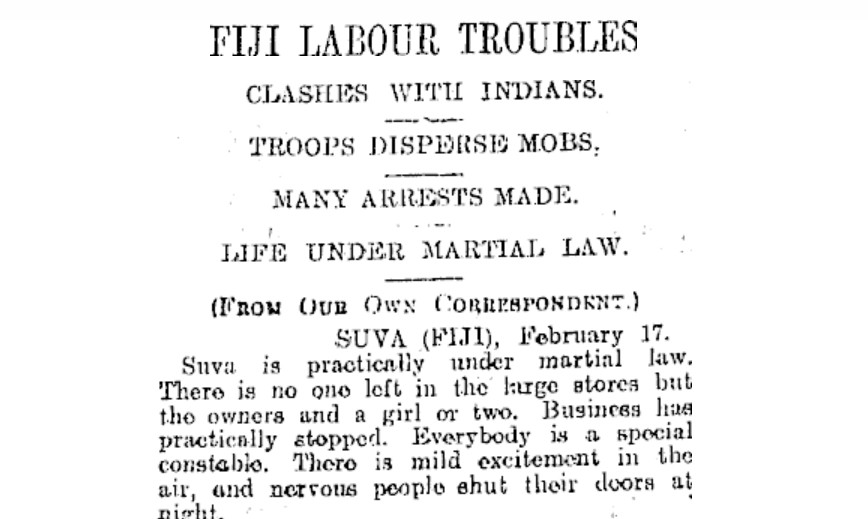Multi-millionaire Kiwi capitalists the Talley family have launched an attack on freezing workers they employ at AFFCO plants in the North Island. Talley’s control a huge chunk of New Zealand’s food production and make fat profits. The freezing workers they employ are willing to fight for the right to a union contract. And that’s why they are under attack.
Talleys is a notoriously anti-union company. It knows that in the past, strong unions in the meat works have won real gains for working people. The company has locked out 1000 union meatworkers in an attempt to smash the union. “The company is fighting as to who manages Affco,” a Talleys lackey says. “Essentially, it is a struggle over management control.”
The core pay rates for meat workers are pitifully low – ranging from $13.48 to $15.76 an hour. This rate is topped up to between $27 and $31 an hour if workers meet the quota for the day, which sounds reasonable until you realise the employment is seasonal. The season can be as long as 11 months and as short as 10 weeks.
Talleys wants to set this quota as high as it likes. In an industry already plagued by accidents and repetitive strain injuries, company control means increased casualties in a one-sided class war. This lockout is the latest attack on our unions and if successful will slash wages and conditions not just for meat workers but for all workers, as other bosses are emboldened to play hard ball in contract negotiations.
Class war in the countryside
In the New Zealand export economy, farming is king. Those who own the land and the factories make mega-profits at the expense of workers who process the food and export it to the world who are being pushed into poverty. Federated Farmers loves to boast that 65% of New Zealand’s export wealth is created by just 14% of the population.
In the case of dairy farming the situation is even more extreme. Less than 14,000 farmers (the number is constantly falling as mega-farms become the norm) earn $10.4 billion in exports. According to this view, Farmers are supposed to be creating huge amounts of wealth which is then frittered away on the dole-bludging working classes. But in the real world, farmers do not shear their own sheep and, often as not, do not milk their own cows. They don’t drive their stock to the meat works, or butcher them there. They don’t work on the railways, waterfront, or ships that bring their stock to market.
It’s in the countryside that the class war is clearest – and the growth of mega-farms is making it clearer every day.
Farmers have always been at odds with working people. Although many immigrants hoped to find land to farm, most remained wage workers. The first industrial unions were, not surprisingly for an agricultural country, in shearing, the meat works, and the wharfs. Farmers found their interests opposed to trade unions at an early stage and became allies for the ruling class. While the most powerful group in our society is the capitalist elite, they make up such a small percentage of the population that to rule, they need the support of other groups. Farmers, who work their own land and employ labour, have proved to be pillars of capitalism – they have physically smashed up striking workers more than once and they have provided the voting base for the National Party.
Small capitalists, giant capitalists
Farmers are small capitalists. They work their own parcel of land and employ one or two staff year-round, and contract out jobs like shearing. The big profits in agriculture go to the big capitalists. Sometimes farmers have banded together to set up capitalist combines like the Alliance meatworks group, or a dairy company, like Fonterra, but often these are private companies.
Talley’s is a behemoth. One of the biggest privately owned companies in New Zealand, it controls seafood, dairy and vegetable processing plants and employs about 4500 workers. The National Business Review Rich List has estimated the Talley family’s wealth at $300 million. They are notoriously anti-union and a major funder of right-wing politicians.
The number of farmers in New Zealand is constantly decreasing as agri-business takes over. But because farmers ‘own’ their own land they have internalised the capitalist mindset of competition, there is no way they will provide any opposition to this process.
Workers rights and tino rangatiratanga
It’s not only class war that’s clearest in the countryside – the legacy of the land wars still lives on. The meatworkers struggle is also a struggle for tino rangatiratanga – self-determination.
Think about Te Kuiti the shearing capital of New Zealand. Te Kuiti is in the heart of the King Country, the last bastion of Maori sovereignty after the British invasion of the Waikato. The town itself consistently votes left, but the surrounding country is dominated by Pakeha farmers. The landless working class of the town are Maori, while the farmers occupying their ancestral lands are overwhelmingly Pakeha. There are a hundred other towns with the same suppressed history.
Ever since Maori worked for wages they have combined in trade unions to fight for their rights – a historic alignment that TW Ratana recognised in his deal with the First Labour Government in 1936. This is the secret of the bitterness of the struggle between capitalists and farmers and the freezing workers’ unions. It’s also the reason the freezing workers have historically been on the frontlines of workers struggles – winning in the past some of the best wages and conditions enjoyed by workers anywhere in the world.
Treaty rights and strikes
Those conditions have been cut back over the past three decades since the 1984 Labour Government blindsided its working class supporters with a pro-business Blitzkrieg. The same government increased the power of the Waitangi Tribunal, which has resulted in some (minimal) compensation being paid for land stolen or fraudulently taken.
But the millions paid in one-off full and final settlements, which were supposed to recreate the basis for Maori economic equality, came at the same time as Maori were hit by massive redundancies in manufacturing, forestry, railways and other sectors. Between 1987 and 1989 one fifth of Maori were laid off. In the recession of the 1990s, Maori unemployment rates were much higher than Pakeha – on a par with the Great Depression of the 1930s.
The Waitangi settlements have created a Maori capitalist elite but the strikes of the 1970s generated more wealth for the majority of Maori than any number of fiscal envelopes. Talley’s accuses the Meatworkers Union of trying to usurp management’s role, of trying to take control of the factories. The union responds with vehement denials. All they are interested in, they say, is protecting the basic rights and conditions of union workers – with survival itself being seen as success.
But it is about control. The meat industry is dangerous and unpredictable. At present, there is a massive overcapacity in the works because farmers hold back their stock each season until the price peaks, then release the animals all at once. This may ensure high prices for farmers but it means worry and insecurity for meatworkers. The demand for decent wages and conditions is a demand for more workers control in the industry.
Moral force vs physical force
Workers have been on the back foot for the last thirty years in New Zealand. Strike rates have fallen as fast as the wealth of the rich list has risen. Our side has lost much of the tactics, strategies and skills needed to stage a successful strike. The union leadership in the Ports of Auckland dispute and the Tally’s lockout have preferred campaigns pitched towards public opinion – for fear the government will have an excuse for more anti-union laws.
Another tactic is to forget about public opinion for now and concentrate on running tough pickets – nothing in, nothing out. This will result in us being accused of intimidating strike breakers and non-union staff, but it will also hit the company where it hurts – in the bottom line. If the unions show they have the courage to fight back, and show political leadership, they will not just win over “public opinion”, they will shape public opinion.

